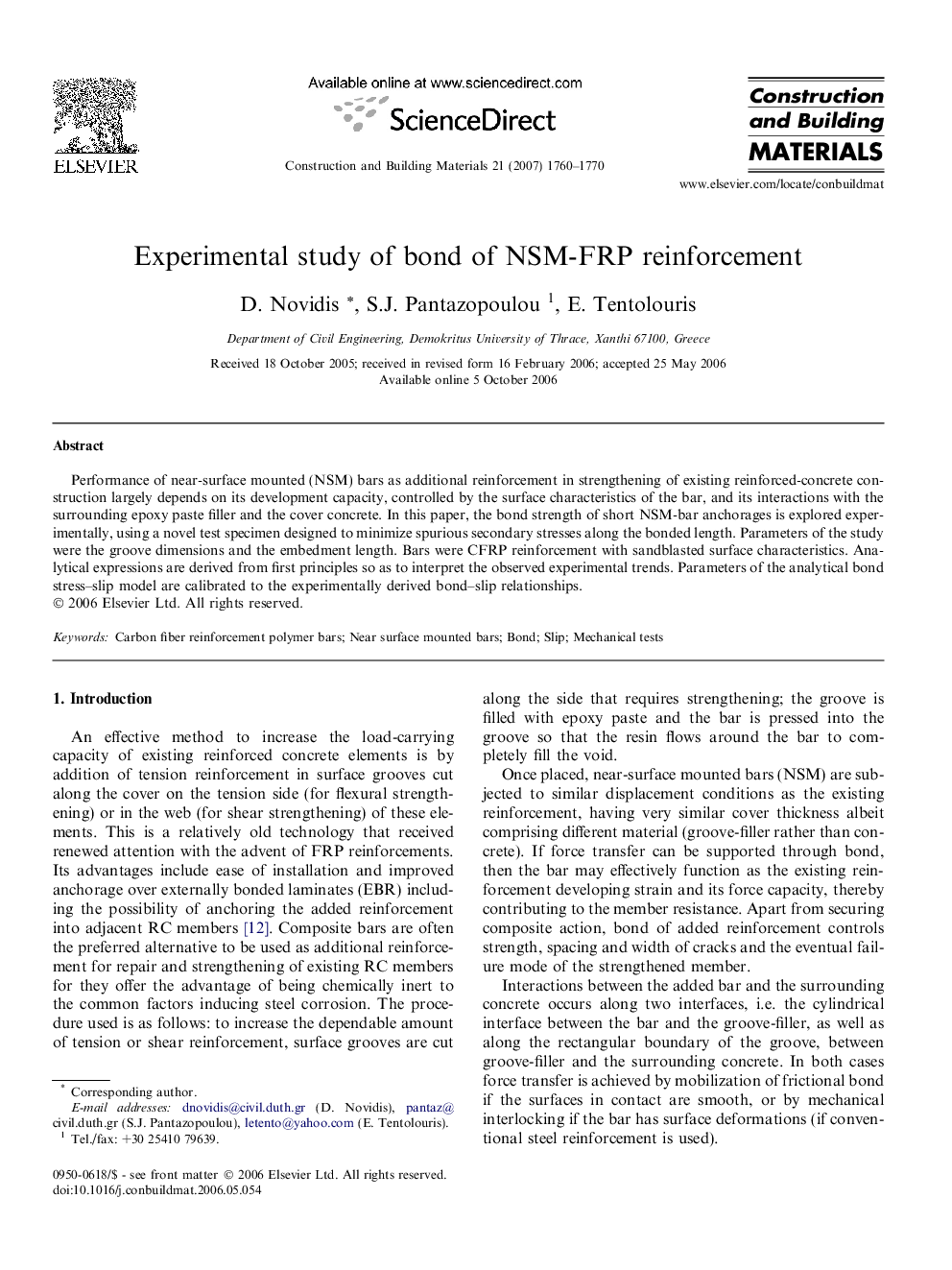| Article ID | Journal | Published Year | Pages | File Type |
|---|---|---|---|---|
| 261325 | Construction and Building Materials | 2007 | 11 Pages |
Performance of near-surface mounted (NSM) bars as additional reinforcement in strengthening of existing reinforced-concrete construction largely depends on its development capacity, controlled by the surface characteristics of the bar, and its interactions with the surrounding epoxy paste filler and the cover concrete. In this paper, the bond strength of short NSM-bar anchorages is explored experimentally, using a novel test specimen designed to minimize spurious secondary stresses along the bonded length. Parameters of the study were the groove dimensions and the embedment length. Bars were CFRP reinforcement with sandblasted surface characteristics. Analytical expressions are derived from first principles so as to interpret the observed experimental trends. Parameters of the analytical bond stress–slip model are calibrated to the experimentally derived bond–slip relationships.
